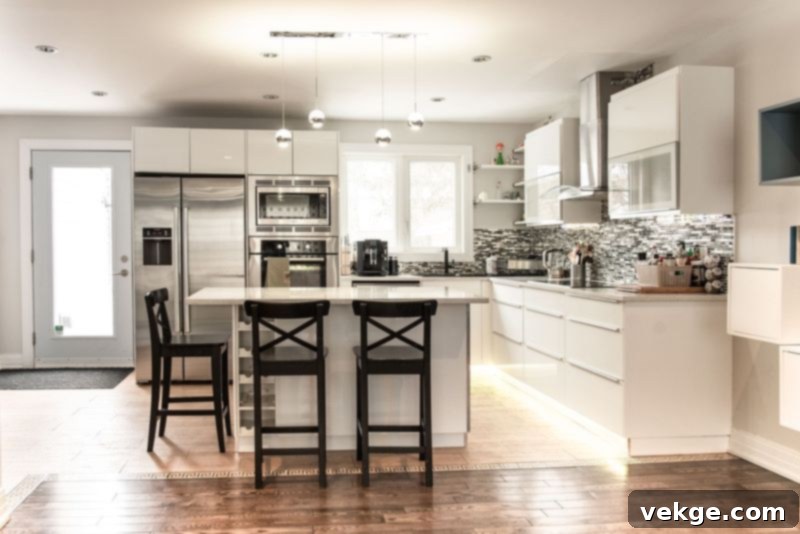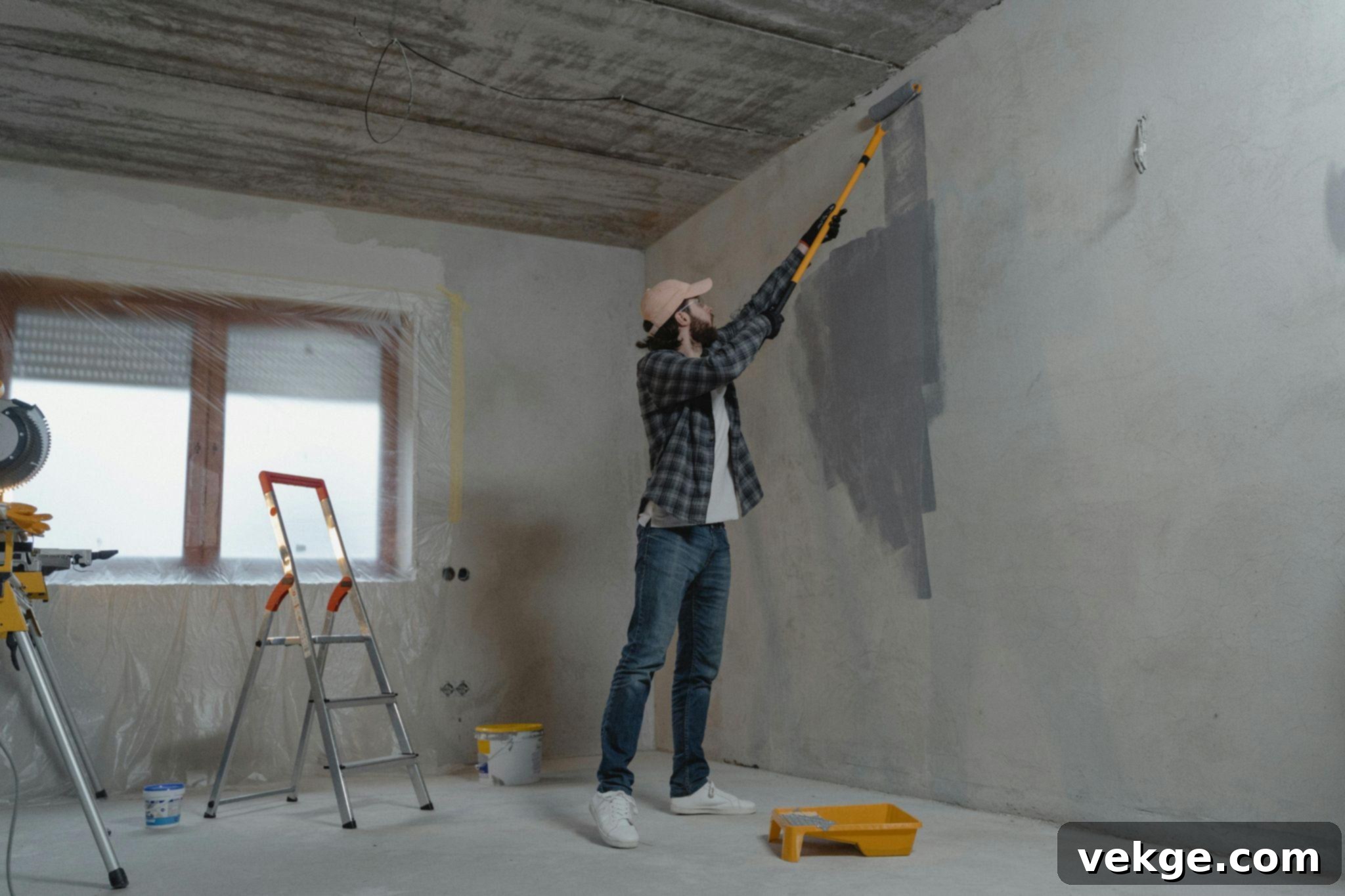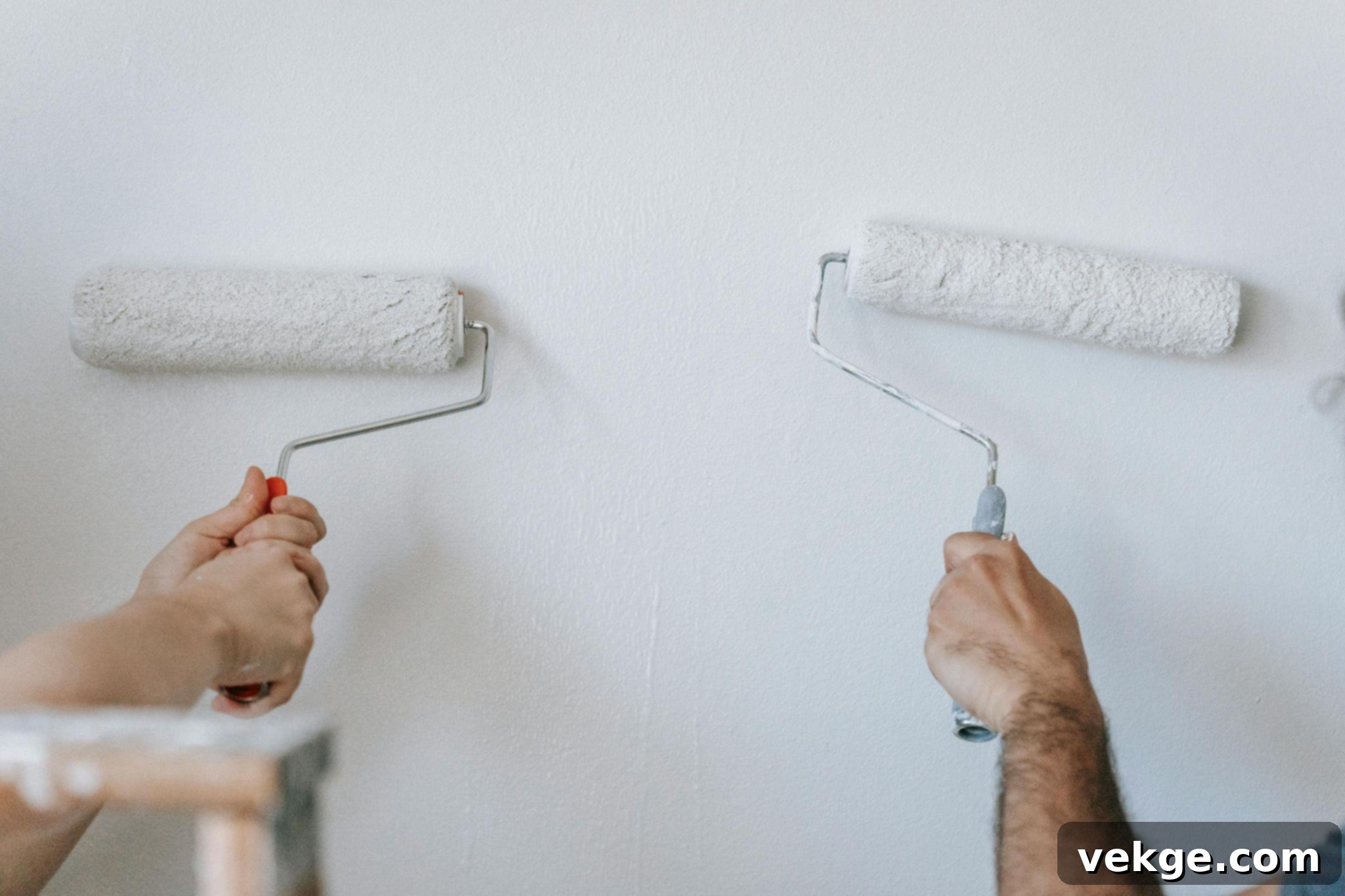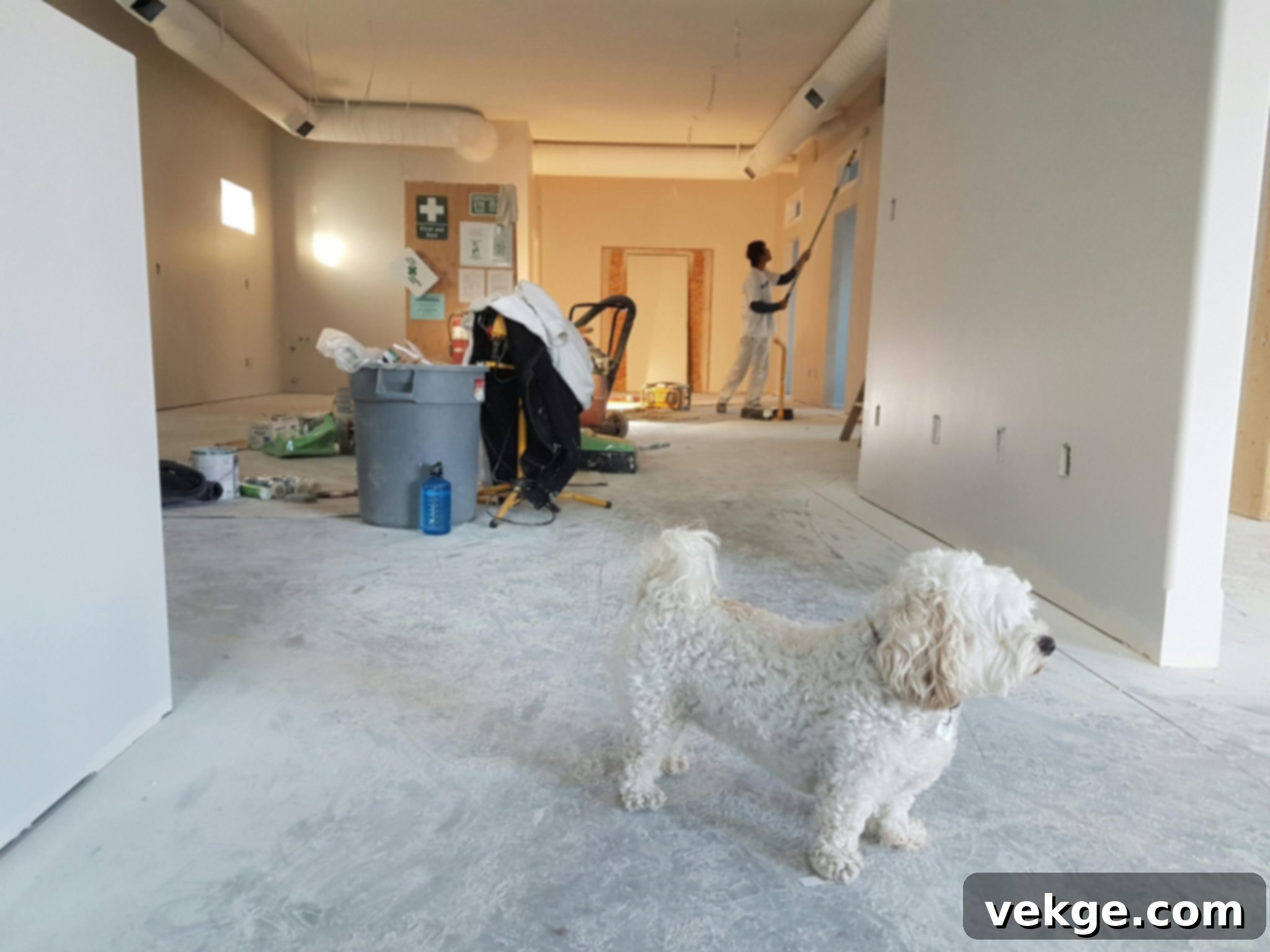First-Time Home Buyer’s Ultimate Remodeling Guide: Maximize Value & Avoid Costly Mistakes
Buying your first house is an incredibly exciting milestone, a moment filled with dreams of a future home. However, it often comes with a dose of uncertainty, especially if you envision transforming the property to perfectly match your style and needs. Whether you’ve purchased a fixer-upper or plan to update an existing home, the journey of remodeling awaits. Navigating this path successfully, particularly as a first-time homeowner, requires a strategic approach. This guide will walk you through making smart, value-based decisions to help you avoid common pitfalls and achieve the home of your dreams without breaking the bank.
Embark on your home remodeling adventure armed with knowledge, focusing on a value-based strategy that will help you sidestep the essential mistakes often made by novice builders and renovators. Understanding where to invest your time and money is crucial for a rewarding outcome.

Debunking Three Costly Remodeling Myths for First-Time Homeowners
Before diving into specific projects, it’s essential to correct some common remodeling misconceptions. These myths, if believed, can significantly impact your budget, timeline, and ultimately, your return on investment (ROI). Understanding these pitfalls is your first step toward smart remodeling.
Myth 1: Whole-House Renovations Always Offer the Best ROI
Many first-time buyers believe that a complete overhaul of their new home will yield the highest returns when they eventually sell. The truth, however, often points in a different direction. Major home updates and strategic, limited changes frequently produce better returns on investment than extensive, wall-to-wall building restorations.
The facts consistently validate that focused, specific changes generate superior financial returns compared to massive redesigns. Consider the power of simple yet impactful improvements: a fresh coat of paint throughout the interior, updated cabinet hardware paired with new light fixtures, or modernizing a single bathroom. These smaller projects often require less capital, are quicker to complete, and appeal to a broader range of buyers, making them highly effective for increasing property value without overspending. Investing in a brand-new foundation or relocating all internal walls, while transformative, often costs more than it adds in resale value.
Myth 2: Trendy Designs Guarantee Higher Resale Value
It’s easy to get swept up in the latest home design trends, especially when scrolling through social media or home improvement shows. That luxurious bathroom design showcased by your favorite influencer might look stunning today, but remember that trends are often fleeting. What’s “in” this year could be “out” next, leaving your home looking dated sooner than you’d like. This rapid change can negatively impact its appeal to future buyers.
Instead of chasing fleeting fads, choose designs that balance modern aesthetics with timeless appeal. Opt for classic colors, versatile materials, and functional layouts that remain popular with a wide range of potential buyers. Neutral palettes, quality craftsmanship, and thoughtful design elements tend to withstand the test of time, ensuring your home retains its charm and value for years to come. Think about classic subway tiles, shaker-style cabinets, or hardwood flooring – these elements rarely go out of style and appeal to diverse tastes.
Myth 3: DIY Automatically Saves You 30% on Renovation Costs
The allure of saving money by tackling home projects yourself is strong, and it’s true that DIY can reduce expenses. However, this cost-saving only materializes when you handle renovations properly and efficiently. Many first-time homeowners underestimate the complexity, time, and specific skills required for certain tasks. A lack of experience or confidence in your abilities can lead to costly mistakes, reworks, and ultimately, higher repair expenses down the line than if you had hired a professional in the first place.
While painting, light landscaping, or simple fixture replacements are often excellent DIY projects, tasks involving plumbing, electrical work, structural changes, or complex installations typically require professional expertise. Understanding your limits and knowing when to call in a pro is crucial for both your budget and the long-term integrity of your home. A poorly executed DIY job can devalue your home, create safety hazards, and cost significantly more to fix than the initial professional fee.
Value-Driven Remodeling: Top ROI Projects for Savvy Homeowners

Every home remodeling project is unique, but certain upgrades consistently yield higher returns on investment. When planning your renovations, focusing on these top performers will help you achieve your sales goals, whether you plan to sell soon or simply want to ensure your investment is sound.
Top performers in terms of ROI frequently include:
- Mid-Range Kitchen Renovation: This isn’t about gutting your entire kitchen. A mid-budget kitchen renovation, focusing on renewing cabinet faces (refacing), improving lighting (LEDs, under-cabinet lights), and replacing old, inefficient kitchen appliances, can return up to 78% of its cost. Buyers often prioritize functional and attractive kitchens, and these targeted updates deliver significant visual and practical improvements without the expense of a full custom remodel.
- Attic Insulation: Though not flashy, adding attic insulation is one of the most cost-effective upgrades. It dramatically reduces energy expenses, delivering up to 65% in savings on utility bills. This benefit appeals to nearly all buyers concerned about long-term living costs and environmental impact, making it a powerful, albeit unseen, selling point.
- Smart Home Security Systems: In an increasingly tech-driven world, smart home features are highly desirable. Modern home security systems, including smart locks, doorbell cameras, and integrated alarm systems, appeal greatly to house hunters who are willing to pay more for enhanced safety and convenience. These systems can increase property value by around 61%, offering peace of mind and modern living.
Projects to skip or reconsider for ROI? While appealing personally, certain highly personalized or luxurious additions offer a comparatively low return on investment. For example, elaborate pool installations often provide only around a 35% return on investment. Similarly, highly customized spaces that cater to very specific tastes (e.g., a professional-grade home theater or a niche hobby room) may not resonate with the average buyer, limiting their appeal and potential for value increase.
Plan Your Home Remodel: Where to Start and What to Prioritize
A successful remodel begins with a well-thought-out plan. Most experts suggest starting your renovation planning from the inside out, prioritizing fundamental structural and functional improvements before focusing on aesthetics. This strategic order prevents wasted effort and ensures a solid foundation for your design choices.
Here’s a smart prioritization strategy:
- Structural & Functional First: Address any issues related to the house’s structure, safety, and essential systems. This includes electrical, plumbing, HVAC, and roof repairs. Crucially, any doorway rearrangements or load-bearing wall removals need to happen at this initial stage. Tackling these significant changes early prevents continuous work delays and the need to redo cosmetic work later. For instance, if you plan a kitchen renovation, avoid painting walls or installing new flooring until after all demolition and structural changes are complete, as these early tasks could easily be damaged or need to be redone.
- Major Layout Changes: If you’re altering the floor plan significantly, such as combining rooms or adding an extension, these plans must be finalized and executed early. These changes impact almost every other aspect of the remodel.
- Rough-Ins: Once structural work is done, new electrical wiring, plumbing lines, and HVAC ducts should be installed. These are the “guts” of your home and need to be in place before walls are closed up.
- Insulation and Drywall: After rough-ins, insulation is installed, followed by drywall, which defines your new room layouts.
- Flooring and Cabinetry: Once the walls are ready, install flooring and permanent fixtures like kitchen cabinets.
- Painting and Finishes: Finally, turn your attention to painting, trim work, and installing decorative fixtures, appliances, and hardware.
Following this logical progression minimizes the risk of costly reworks and helps maintain your project timeline.
Budgeting Your Remodel: Average Costs and How to Save
Let’s talk numbers – a critical aspect of any renovation. In the United States, the average home remodel cost in 2025 reached approximately $50,000. However, this is a broad average, with costs varying significantly based on the project’s scope. Small, localized projects might cost as little as $15 per square foot, while comprehensive, high-end remodeling initiatives can easily exceed $60 per square foot, or even more.
A helpful breakdown of typical remodeling expenses:
- Labor: Approximately 30% of the total cost. This covers contractors, specialized tradespeople (electricians, plumbers), and general workers.
- Materials: Around 45% of the budget. This includes everything from framing lumber to finishes like flooring, paint, cabinets, and fixtures.
- Unexpected Expenses/Contingency: Always add at least 15% (and ideally 20%) as a cushion for unforeseen problems. Old houses, especially, can hide surprises like outdated wiring, water damage, or structural issues that only become apparent during demolition.
To perform a budget-friendly home remodel, consider focusing on remodeling rooms separately rather than attempting a whole-house renovation at once. Phased projects are less demanding on your budget and easier to manage. Prioritize rooms that offer the highest ROI or are essential for your daily living, such as the kitchen or a main bathroom. Additionally, look for opportunities to save on materials, obtain multiple quotes from contractors, and consider doing simple, appropriate DIY tasks yourself.
DIY vs. Hiring Professionals: What First-Time Buyers Should Know

Deciding between tackling a project yourself and hiring a professional is a crucial decision for every homeowner. Many homeowners enjoy the satisfaction and cost savings that come with do-it-yourself projects. Tasks like painting, installing simple pre-cut tiles, refinishing furniture pieces, or basic landscaping are often excellent candidates for DIY, especially if you have some experience or are willing to learn. The internet offers countless tutorials and resources for these types of projects, and a significant number of young adults are embracing this sector, taking leadership in their home improvements.
However, there are clear lines where professional expertise becomes not just advisable, but necessary. You absolutely must contact a professional for any job that affects the structural integrity of your home or involves complex systems like electrical wiring, plumbing, HVAC, or solar panel installation. These areas require specialized knowledge, adherence to safety codes, and often specific licenses or permits. Attempting these tasks without proper training can lead to dangerous situations, expensive future repairs, or even invalidate your home insurance. When in doubt, it’s always best to call in a pro to ensure the work is done safely, correctly, and to code.
Energy Efficiency Upgrades That Pay Off Long-Term
As a homeowner, implementing energy-efficient upgrades offers significant long-term financial advantages, making your home more comfortable, eco-friendly, and attractive to future buyers. These upgrades deliver outstanding value whether you plan to stay in your home for years or sell it in the near future.
Key energy-efficient improvements include:
- Enhanced Insulation: Beyond just the attic, improving insulation in walls and crawl spaces prevents heat loss in winter and heat gain in summer, leading to substantial savings on heating and cooling bills.
- Energy-Efficient Windows: Replacing old, single-pane windows with modern, double or triple-pane, low-e glass windows significantly reduces energy consumption and improves soundproofing.
- HVAC System Upgrades: Installing a new, high-efficiency furnace, air conditioner, or heat pump can drastically cut energy use. Smart thermostats further optimize temperature control.
- Sealing Air Leaks: Simple and often DIY-friendly tasks like caulking and weatherstripping around doors and windows can prevent significant energy waste.
- LED Lighting: Switching from incandescent bulbs to LED lighting reduces electricity consumption for lighting by up to 80% and lasts much longer.
- Energy-Star Appliances: When replacing major appliances, choose Energy Star certified models to save on utility costs.
These investments not only reduce your monthly expenses but also boost your home’s appeal to environmentally conscious buyers, offering a strong return on investment.
Permits and Local Regulations for Your Remodel
Do not neglect this crucial step! Before starting any significant work, always consult the building department in your local municipality or county. Understanding and obtaining the necessary permits and adhering to local regulations is paramount for a smooth and legal renovation process. A permit for home remodeling is often required, particularly when altering structural elements, electrical systems, or plumbing. This ensures that the work meets safety standards and local building codes, protecting both you and future occupants of the home.
It’s also important to keep in mind that you could require additional clearances or approvals. For instance, if your property falls under a homeowners’ association (HOA), you may need their clearance for exterior changes or significant improvements, including solar panel installations. Ignoring permit requirements or HOA rules can lead to fines, stop-work orders, or even the forced removal of completed work, which can be incredibly costly and frustrating. Always do your due diligence upfront to avoid legal and financial headaches down the line.
How to Choose Materials That Balance Cost and Quality

When renovating, selecting the right materials is a delicate balancing act between cost, durability, aesthetics, and ease of installation. This balance is particularly important if you’re working with a limited budget for renovation. Opting for the cheapest option isn’t always the most cost-effective in the long run if it means compromising on quality and longevity.
Consider these strategies:
- Value over Luxury: Instead of expensive solid hardwood, engineered hardwood or high-quality laminate flooring can beautifully replicate the look and feel of real wood without costing a fortune. Similarly, quartz countertops offer excellent durability and aesthetic appeal at a more accessible price point than some natural stones.
- Smart Shopping: To further stretch your budget, actively seek out deals. Check for outlet stores, clearance sales, or remnant sections when purchasing materials like countertops, tiles, or flooring. Buying in bulk or during seasonal sales can also lead to significant savings.
- Durability Matters: For high-traffic areas or elements that experience a lot of wear and tear, investing in more robust materials will pay off. For instance, durable, washable paints can save you from repainting frequently.
- Ease of Installation: If you plan on doing some DIY work, selecting materials and equipment that are simple to install can significantly lower the chance of mistakes and frustration. For example, peel-and-stick backsplash tiles are much easier for a beginner to install than traditional grout-and-tile methods.
Remember, the goal is to achieve the best value, ensuring your chosen materials look good, last long, and fit within your financial plan.
Timing Your Renovations: Optimal Order for Projects
The key to a successful, stress-free remodel is an intelligent and logical timeline. Following an optimal order for your projects can dramatically reduce rework, save time, and maintain project timelines. Here’s a generally recommended sequence that minimizes disruption and maximizes efficiency:
- Demolition and Structural Alterations: Begin by removing old fixtures, walls, and making any significant structural changes (e.g., knocking down or building walls, changing doorways). This is the messiest stage, so get it done first.
- Rough-Ins (Plumbing, Electrical, HVAC): Once the layout is set, all new or relocated plumbing lines, electrical wiring, and HVAC ducts should be installed or updated behind the walls. This is crucial before closing up any surfaces.
- Insulation: After rough-ins are complete and inspected, install new insulation in walls and ceilings for improved energy efficiency.
- Drywall Installation and Finishing: Hang new drywall, followed by taping, mudding, and sanding to create smooth walls and ceilings.
- Flooring Installation: Install new flooring. It’s often easier to install before cabinets and other fixtures, especially for hard surfaces like tile or hardwood. For carpet, it might be installed later.
- Interior Painting: Once walls and ceilings are smooth and floors are protected, it’s time for painting. This ensures a clean finish before permanent fixtures are installed.
- Cabinetry and Built-Ins: Install kitchen cabinets, bathroom vanities, and any custom built-in shelving.
- Countertops: After cabinetry is in place, measure and install countertops.
- Appliances and Fixtures: Install major appliances, sinks, faucets, light fixtures, and trim.
- Final Touches: Complete with hardware (knobs, pulls), switch plates, and any other decorative elements.
By adhering to this process, you minimize the risk of damaging newly installed finishes and maintain a logical progression of work, leading to a more efficient and satisfying renovation experience.
Financing Your Remodel: Loans and Budget Tips for First-Time Buyers
Are the expenses of your dream remodel feeling overwhelming? You’re not alone. Many first-time buyers find that financing is a significant hurdle. Fortunately, several options can help you fund your home remodel plans in addition to your initial house purchase.
- Renovation Loans: These specialty mortgages, such as an FHA 203(k) loan or a Fannie Mae HomeStyle loan, allow you to combine the cost of your home purchase and eligible renovations into a single loan. This can be incredibly convenient for fixer-uppers.
- Home Equity Loans or HELOCs (Home Equity Lines of Credit): If you’ve already built some equity in your home, you can borrow against it. Home equity loans provide a lump sum, while HELOCs offer a revolving line of credit.
- Personal Loans: For smaller projects, a personal loan might be an option, though they typically have higher interest rates than secured loans.
- Cash-Out Refinance: This involves refinancing your existing mortgage for a larger amount and taking the difference in cash to fund your renovations.
Beyond financing, rigorous budgeting is crucial:
- Budget with Purpose: Clearly define your project scope, get detailed estimates for every expense, and track spending meticulously.
- Prioritize High-Impact Initiatives: Focus your budget on projects that offer the best ROI or significantly improve your quality of life.
- Allow for Unforeseen Problems: As mentioned, always allocate a contingency fund (15-20%) for unexpected issues. This buffer is essential to prevent projects from derailing due to unforeseen costs.
- Embrace Incremental Improvements: Remember, you don’t have to do everything at once. Your quality of life can be significantly enhanced by even minor improvements, such as a fresh coat of paint, modern fixtures, and decluttering areas. Small, strategic updates can make a big difference without the immediate financial strain of a full renovation.
Conclusion: Building Your Dream Home, One Smart Remodel at a Time
Remodeling your first home doesn’t have to feel like an endless, daunting puzzle. With careful planning, a little perseverance, and a clear understanding of value-driven strategies, you can transform your house into a place that truly reflects your wants, style, and functional needs. The journey of remodeling is an opportunity to imbue your new home with your personality and make it uniquely yours.
Ultimately, remember that this process goes beyond just ROI or potential resale value. While financial returns are important, the true reward lies in designing a home that perfectly suits your routines, habits, and the life you’re constructing there. By making informed decisions, you’ll create a comfortable, efficient, and beautiful space where you can build lasting memories for years to come. Happy remodeling!
